Photo

“Das Krokodil.” Unterhaltungen aus der Naturgeschichte. 1794.
Internet Archive
1K notes
·
View notes
Photo

Egyptian gold and garnet finger ring depicting the crocodile god Sobek-Re, crowned with the sun disk, in intaglio, dated to the late Ptolemaic period, or the 1st century BCE. Found on Christie’s.
298 notes
·
View notes
Text

Historic ornament : treatise on decorative art and architectural ornament (1909)
53 notes
·
View notes
Text
Guys.
Y’all.
I…
I just. I just… i have discovered something. And I have laughed too much. I have laughed every time I have tried to explain it to someone. I cannot get through this.
Look. Okay.
There are two things you need to know, here.
First: There’s a style of Greek pottery that was popular during the Hellenic period, for which most of the surviving examples are from southern Italy. We call them ‘fish plates’ because, well, they’re plates, and they’re decorated with fish (and other marine life).
Like this one, currently in the Met:
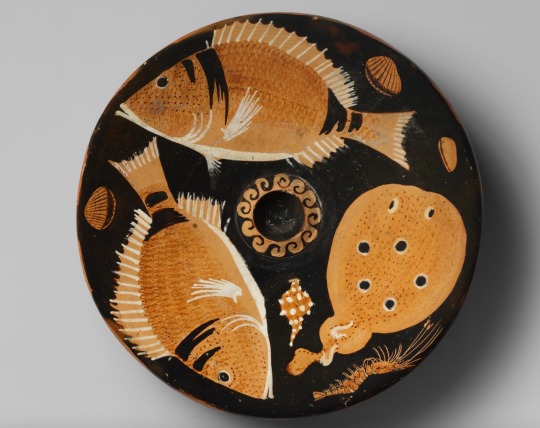
Or this one, currently in the Cleveland Museum of Art:

They’re very cool. We’re not 100% sure what they were for, because most of the surviving ones were found as grave goods, but that’s a different post.
The second thing you need to know is that when we (Classics/archaeology/whatever as a discipline) have a collection of artefacts, like vases, sculptures, paintings, etc. and we do not know the name of the artist, but we’re pretty sure one artist made X, Y and Z artefacts, we come up with a name for that artist. There are a whole bunch of things that could be the source for the name, e.g. where we found most of their work (The Dipylon Master) or the potter with whom they worked (the Amasis Painter), a favourite theme (The Athena Painter), the Museum that ended up with the most famous thing they did (The Berlin Painter) or a notable aspect of their style. Like, say, The Eyebrow Painter.
Guess what kind of pottery the Eyebrow Painter made?
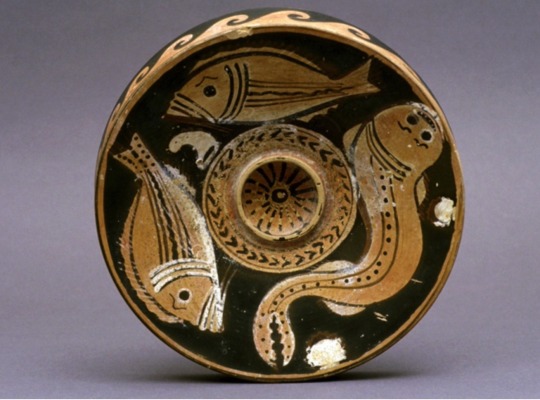
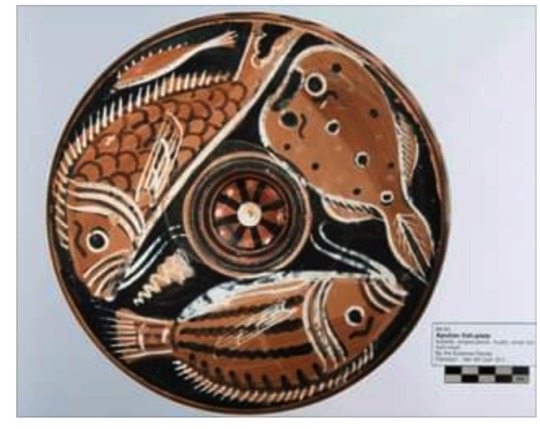

56K notes
·
View notes
Text

Hook-nosed Sea Snake aka Beaked Sea Snake (Hydrophis schistosus), family Elapidae, Sri Lanka
Venomous.
photograph by රමේෂ් කරුණානායක
484 notes
·
View notes
Text

Stephanie Law, Sacred Things, watercolor and gold leaf, 2023, 7.5 × 15.25 inches.
121 notes
·
View notes
Text

Statuette of a Jackal
Egyptian, Late Period, Dynasty 26 (664-525 BCE)
This statuette represents the god Anubis or Wepwawet, the jackal guardians of burial sites. The figure is solid cast from copper alloy, and the details of its fur are incised. The figure may originally have decorated the top of a shrine.
37 notes
·
View notes
Text

Winged Scarab Amulet
Egyptian, Late Period (664–332 BCE)
A scarab amulet was often placed over the heart of a mummy to act as its protector. The wings allowed the scarab to join the daily rising and setting of the sun, a cycle that was equated with eternal death and rebirth.
22 notes
·
View notes
Text

Statuette of Sobek
Egyptian, Late Period, Dynasty 26–30, 664–332 BCE
Here the crocodile god Sobek, associated with water and the Nile River, wears an elaborate crown adorned with horns, feathers, and a uraeus (sacred serpent). Egyptian gods were commonly depicted with human bodies and animal heads. The animal referred to the god’s personality or characteristics, not his or her appearance. For example, the crocodile head of Sobek alludes to his fierceness. Statuettes like these were offered to the gods to ask for their help or in thanks for their assistance.
153 notes
·
View notes
Text
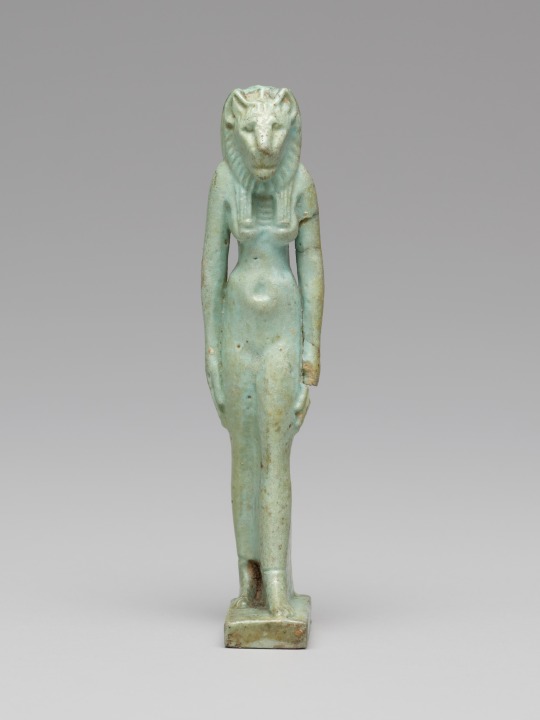
Amulet of the Goddess Sekhmet
Egyptian, Third Intermediate Period (about 1069–664 BCE)
With the head of a lion and the idealized figure of a woman, this amulet depicts a powerful ancient Egyptian goddess. Ancient Egyptians—both living and dead—wore amulets of gods and goddesses to bring protection and health. These included depictions of deities in their human, animal, or mixed forms. This amulet represents one of several goddesses who appeared in a hybrid leonine-human form, likely Sekhmet, a goddess of pestilence and divine violence. In Egyptian mythology, Sekhmet acted as the Eye of Re, the daughter and protector of the sun god, Re. She had the ability to make enemies fall sick or heal those who were afflicted, so she would have provided the wearer of this amulet with protection from disease and other dangerous forces.
371 notes
·
View notes
Text

Blue-Painted Ibex Amphora from Malqata
Egyptian, New Kingdom ca. 1390–1352 B.C.
115 notes
·
View notes
Text

Plaque Depicting a Ram
Egyptian, Ptolemaic Period (332–30 BCE)
The two sets of horns on this exemplary portrayal of a ram reflect ancient Egyptian sculptors’ simultaneous close observation of nature and strict adherence to artistic tradition. The elongated corkscrew horns atop the ram’s head belong to a species that was already long extinct when this plaque was carved. Rather than abandoning the conventional representation of this animal, artists added a set of curved horns to reflect the appearance of contemporary rams. On similar plaques portions of the original gridded surface remain in the top corners and along the bottom to emphasize the depth of carving. Egyptian artists utilized grids to maintain correct proportions in their work.
19 notes
·
View notes
Text

Amulet of the Goddess Sekhmet
Egyptian, Third Intermediate Period (about 1069–664 BCE)
The lioness Sekhmet and the cat Bastet were regarded as being the wild and tame aspects, respectively, of the same unpredictable goddess. Bastet is shown seated, holding her rattle (sistrum) that made music that calmed Sekhmet, transforming her into a gentle cat.
85 notes
·
View notes
Text

Antelope Head
Egypt, Late Period 525–404 B.C.
The head was probably part of a ceremonial boat of hard stone that stood in a temple sanctuary. Boats with antelope heads at the prow were sacred to the god Sokar.
57 notes
·
View notes
Text
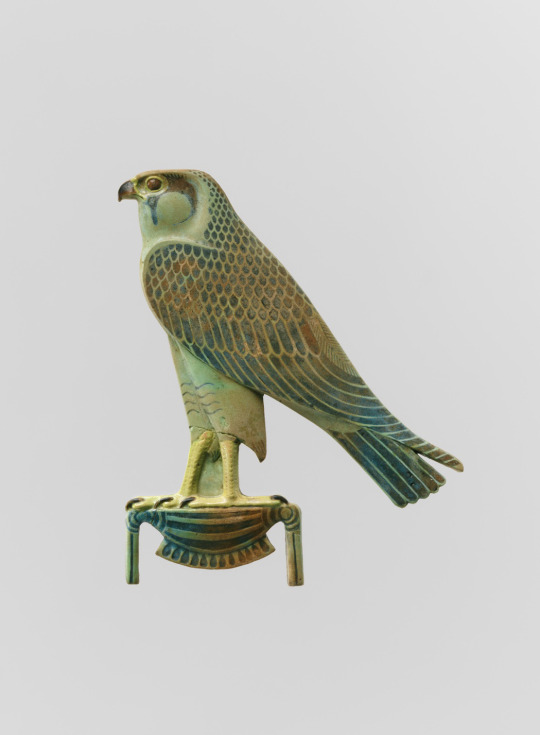
Inlay Depicting "Horus of Gold"
Egypt, Late Period–Ptolemaic Period, 4th century B.C
718 notes
·
View notes
Text

Amulet of the God Horus as a Falcon
Egyptian, Late Period–Ptolemaic Period (664–30 BCE)
This falcon, a representation of Horus, is finely detailed with the feathers and the scales on the legs. The falcon probably originally wore a double crown, which symbolized his rule over Northern and Southern Egypt.
80 notes
·
View notes
Text

Figure of a Baboon
Egypt, Late Period 664–525 B.C.
Thoth, the god of writing, accounting and all things intellectual, was associated with two animals: the ibis and the baboon. His images either show him represented by these animals or they combine a human body with an ibis head. Here the god appears as a baboon.
73 notes
·
View notes